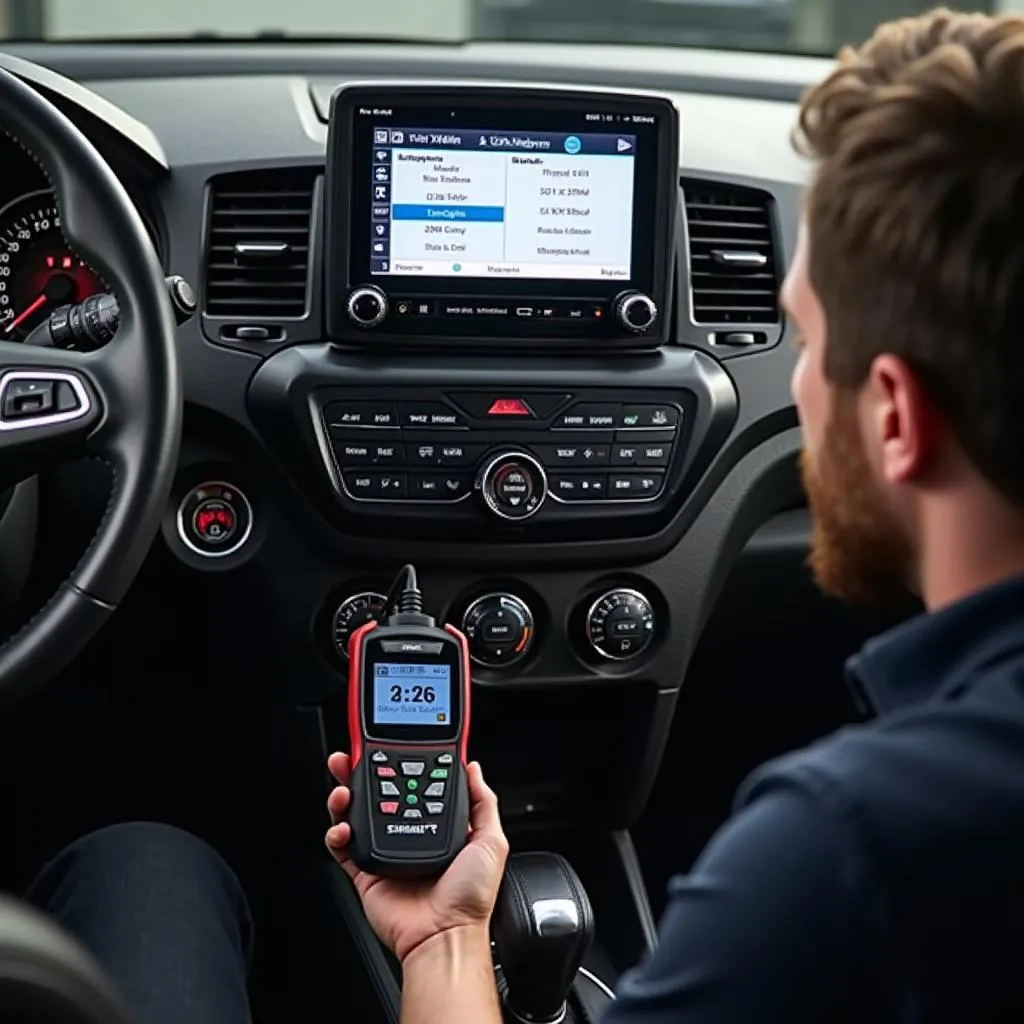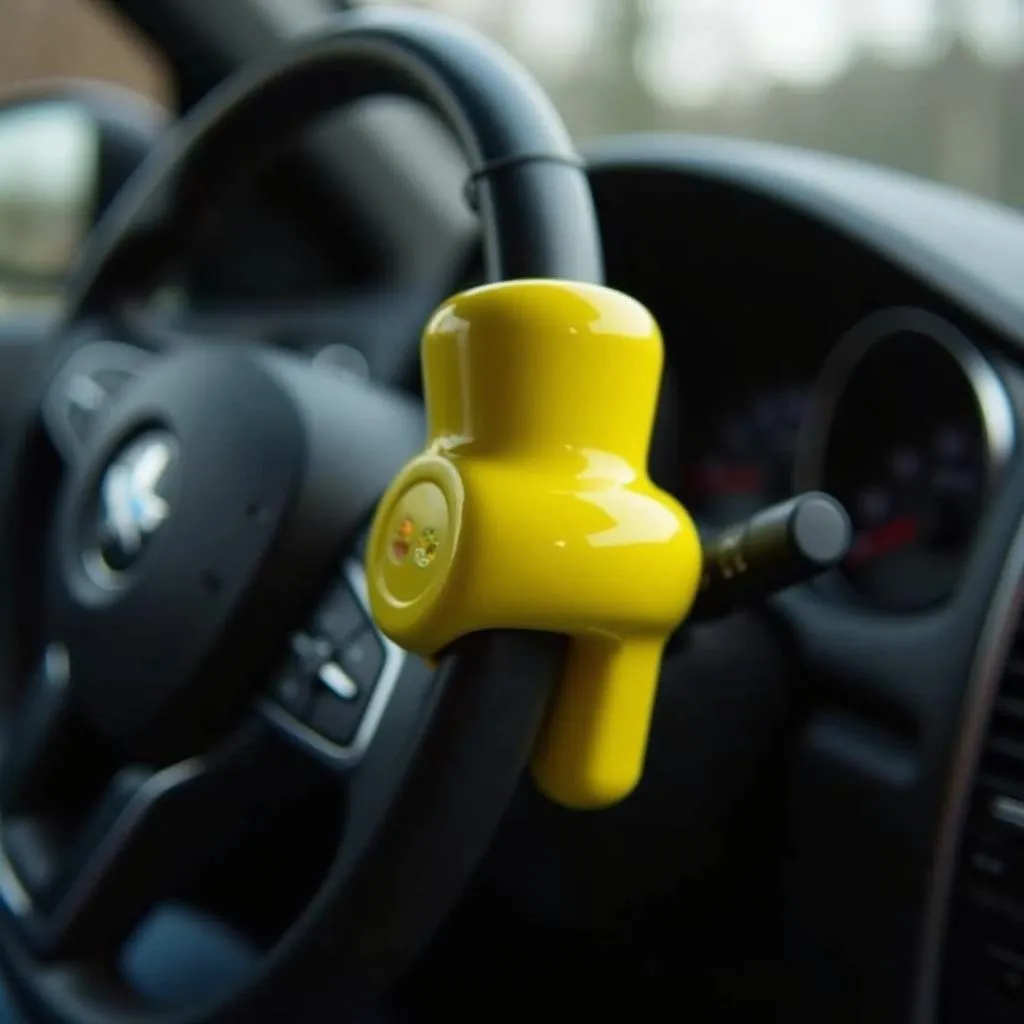Having trouble starting your Ford truck? A malfunctioning anti-theft system might be the culprit. Don’t panic, this is a common issue, and often, resetting the system can get you back on the road. This guide will walk you through the steps on how to reset the anti-theft system on your Ford truck.
Understanding the Anti-theft System
Before we dive into the reset process, it’s essential to understand how the anti-theft system works. Your Ford truck’s anti-theft system, also known as the Passive Anti-Theft System (PATS), is designed to prevent vehicle theft. It uses a transponder chip embedded in your key that sends a signal to the vehicle’s computer when you try to start the engine. If the signal isn’t recognized, the engine won’t start.
Identifying Anti-theft System Problems
Several signs indicate a potential issue with your truck’s anti-theft system:
- The engine cranks but doesn’t start: This is a classic symptom of an anti-theft issue. The engine is trying to turn over, but the anti-theft system is preventing it from fully igniting.
- “Theft” or “Security” light flashing on the dashboard: This visual indicator often accompanies a failed attempt to start the vehicle due to the anti-theft system.
- Unable to lock/unlock doors with key fob: In some cases, the anti-theft system may interfere with the key fob’s signal, preventing you from locking or unlocking the doors remotely.
Essential Tools for Resetting the Anti-theft System
You won’t need specialized tools to reset your Ford truck’s anti-theft system. Here’s what you’ll need:
- Your Ford truck key: Ensure you have the correct key with a working transponder chip.
- Patience: Sometimes the reset process may take a few tries.
Steps to Reset Your Ford Truck Anti-theft System
Here’s a step-by-step guide on how to reset the anti-theft system on your Ford truck:
- Insert the key and turn to the “ON” position: Don’t try to start the engine yet. Just turn the key to the position where the dashboard lights come on.
- Wait for the “Security” or “Theft” light to stop flashing: This usually takes around 10-15 minutes, but it can take longer. The light going off indicates that the system is ready to be reset.
- Turn the key to the “OFF” position and remove it: Leave the key out for a minute.
- Re-insert the key and start the engine: Your truck should start as usual.
If the above steps don’t work, you may need to try a few more times. If you’re still experiencing problems, consult your owner’s manual or contact a qualified mechanic or automotive locksmith. For advanced diagnostics and troubleshooting, consider utilizing professional-grade automotive diagnostic tools.
Frequently Asked Questions about Ford Truck Anti-theft System Issues:
Q: Can I disable the anti-theft system on my Ford truck?
A: Disabling the anti-theft system is not recommended. It compromises the security of your vehicle. If you’re having persistent issues with the system, it’s best to have it diagnosed and repaired by a professional.
Q: My Ford F-150 anti-theft system won’t reset. What should I do?
A: If the reset procedure doesn’t work, you might be dealing with a more complex issue like a faulty key, ignition cylinder problem, or a malfunctioning anti-theft module. In such cases, seeking assistance from a certified mechanic or an automotive locksmith specializing in Ford vehicles is recommended. They can diagnose the problem accurately and provide the appropriate solution.
Looking for more information on specific Ford truck models? Check out these resources:
- How to Turn Off Anti-theft System on Ford F150
- How to Reset Anti-theft System Ford F350
- How to Disable Anti-theft System on 2002 Ford Ranger
Cardiagtech: Your Partner in Automotive Diagnostics
For professional-grade automotive diagnostic tools, consider CARDIAGTECH. Our range of products can help you diagnose and troubleshoot various car issues, including complex problems like anti-theft system malfunctions.
While this guide provides general information, remember that specific procedures might vary slightly depending on your Ford truck’s model year and trim level. Always refer to your owner’s manual for precise instructions.
If you’re unsure about performing these steps yourself, don’t hesitate to contact a qualified mechanic or an automotive locksmith. They have the expertise and tools to diagnose and fix the problem safely and effectively.


